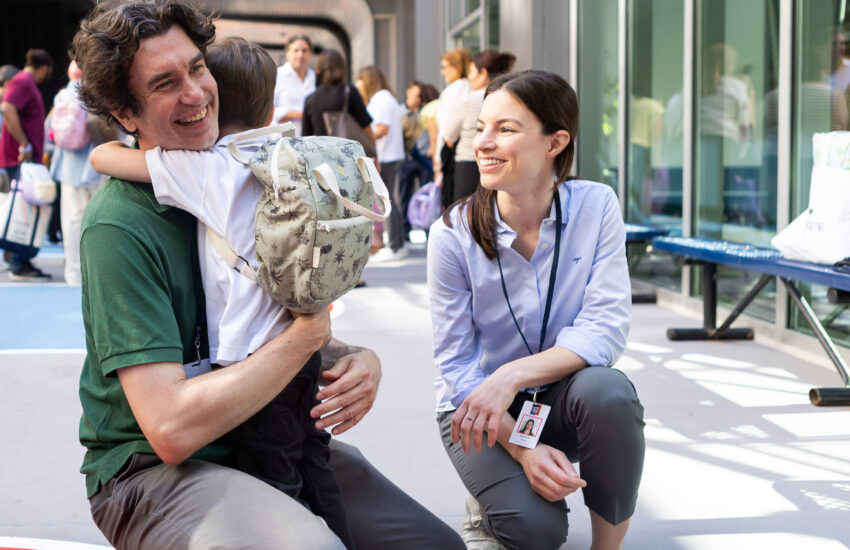As the new school year approaches, many parents are preparing their young children for their very first day of school. This milestone is an exciting time, but it can also be filled with a mix of emotions, especially when it comes to separating from caregivers. Whether it’s the first time your child is entering a classroom or just the first time in a new environment, it’s normal for both parents and children to feel a bit anxious.
Understanding Separation Anxiety
Separation anxiety is a common and natural part of early childhood development. It often appears in the form of crying, clinging, or even tantrums when a child has to say goodbye to a parent or caregiver. While these reactions can be difficult to manage, they’re a sign that your child is developing strong attachments and learning to navigate new experiences. Most children will adjust as they become more familiar with their new surroundings, but it’s important to approach this transition with care and preparation.
Preparing Your Child for the First Day
One of the best ways to ease your child’s anxiety is to prepare them in advance for what to expect. Talk to them about school in a positive way—highlighting the fun activities they’ll get to do, the new friends they’ll make, and the exciting things they’ll learn. Be honest about when you’ll return to pick them up. Establishing trust is key, and your child will feel more secure if they know what to expect.
Another helpful strategy is to create a goodbye ritual that is brief and reassuring. Whether it’s a special handshake, a hug, or a simple phrase, a consistent ritual can help make the separation smoother. However, it’s important to keep these goodbyes short—prolonging them can make it harder for your child (and for you).
Practice Makes Perfect
If your child is particularly anxious, practicing short separations before the school year begins can be beneficial. Start with brief moments where you leave the room or run a quick errand, and gradually increase the time apart. This helps your child build confidence in their ability to manage without you, even if just for a little while.
Using Positive Reinforcement
Children respond well to positive reinforcement. Setting small goals and offering simple rewards for successful separations can motivate them to be brave. For example, you might give your child a sticker each time they enter the classroom after a quick goodbye. These small rewards can make a big difference in how they approach the separation.
Supporting Your Child at Home
Separation anxiety doesn’t just happen at school—it can also occur at home, often with one parent being the preferred caregiver. In these situations, it’s important for both parents to work together to help the child practice separating. Consistency is key: if it’s Dad’s turn to do bath time, then Dad should stick to it, even if the child initially protests. Over time, this consistency will help your child feel more comfortable with both parents and ease their anxiety.
When to Seek Additional Support
While most children will adjust to their new school routine with time and practice, some may continue to struggle with separation anxiety. If your child’s anxiety is intense, happens with every separation, or interferes with their daily life, it might be a sign of separation anxiety disorder. In these cases, it’s important to seek support from a mental health professional who can provide additional strategies and guidance.
Final Thoughts
Starting school is a big step for any child, and it’s normal to experience some bumps along the way. By preparing your child, practicing separations, and using positive reinforcement, you can help make this transition as smooth as possible. Remember, the emotions your child is experiencing are part of their growth, and with your support, they’ll build the resilience and coping skills they need to thrive in their new school environment.
As you embark on this new chapter, know that we’re here to support both you and your child every step of the way. Welcome to the new school year!
Photo credit: Brooke Slezak/Lycée Français de New York
About the Author :
Vannina Boussouf grew up on the Mediterranean island of Corsica, where bilingualism is an integral part of identity. She studied English and Spanish at the University of Corsica, and philology and letters in Cordoba, Spain, before starting a career as an elementary teacher and administrator. Vannina relocated to the United States in 2004, where she taught at the International School in Louisiana. She joined the Lycée in 2007 to direct the Primary School, and during her tenure, she has focused on innovative teaching methods that support the development of the whole child in a bilingual setting.


